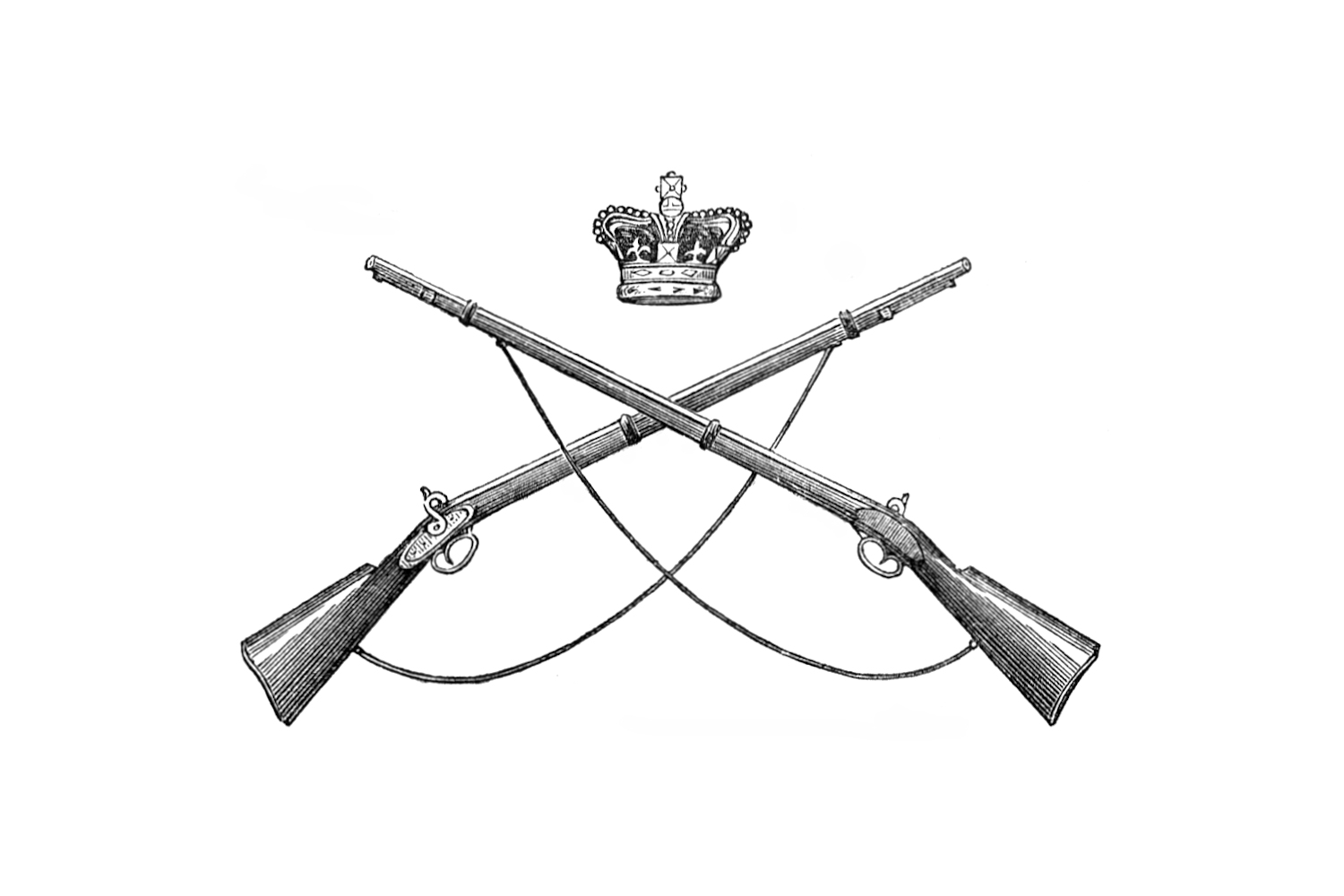You are here: Home > Marksmanship > Military Marksmanship
The following letter extract is reprinted from the Morning Chronicle (London), Monday 14 May 1855. It provides an interesting first hand account of life in a rifle pit during the Crimean War. Of particular note is the long range marksmanship with the newly issued Enfield rifle, together with comment on shooting in conjunction with a spotter whilst firing upon gunners.
LETTER FROM THE CRIMEA
We have been favoured with the following extracts from the letter of an officer in the Crimea:-
Camp before Sebastopol, 27 April 1855
I have no news for you, but I write a few lines to tell you that I am in good health an spirits. It is no use telling you anything about the siege, for you see that in all the papers.
Within the last week I have been twice in the trenches, both times in the advanced trench, and the rifle pits in front of it, and for the first time I tried the new Enfield rifle (a smaller bore than the Minié). They carry beautifully and while clean for about twenty rounds, but then they begin to lead, and do not carry so well. When I first saw our men firing (last Saturday, 21st) from the rifle pits, they had no idea of range or distance. Two of them were firing at the same place; one with his sight up for 700, and the other for 900 yards. I told them it was too much, and with the sight up for 400 I put two shots in succession through the loophole that the Russian was firing at them from. As I sat about a quarter of an hour afterwards, half asleep, in the pit, they called to me, and said that three men were coming and down from the batteries towards the town. I told them to elevate for 900 yards. They made them dodge from house to house. But when they got into the street they thought they were out of our range, and coolly walked arm in arm down the middle of the street. I could not quietly stand that. I took the best rifle, put up the sight for 900, and calculating the distance to be about 1,000 yards, I fired higher. The man on the right dropped like a stone, and the other two rushed into a house. He lay there for some time. They afterwards managed to get him into a house. This shows what the rifles will do when properly laid on. Afterwards I saw two carts laden with powder-boxes going from the town to the batteries, at what I guessed to be 1,100 yards. I took a rifle, and soon caused the drivers to run for the batteries, and leave the carts to come as they could. Our men said I knocked over five or six, but I only feel certain about one. I was sent out to the rifle pits again on Tuesday (24th), but the Russians were very shy that day and gave very few chances. I had a regular duel with a Russian in the nearest rifle pit to us (250 yards). In about half an hour he gave up firing, and as I had put about four shots out of seven through his loophole, I thought I must have hit him. I left a namesake of mine in my company to watch him. Very soon the Russian, and I who by-the-by was a splendid shot, fired again, and put the ball right through Private ——’s cap, because he did not bob his head when he saw the smoke. They began to fire 68-pounders at us in the rifle pits from a great gun in the Redan, 700 yards from the pit I was in, and with two men loading rifles for me, I bullied them so much, that they were half an hour loading the gun, for I had a very sharp corporal watching the gunners with my telescope, and directly they appeared I fired into the embrasure. As soon as I saw the gun was loaded I made the men lie down close under the parapet until they fired. The shot came close over our heads, but did no harm. The same thing went on again, but they only fired four shots at us altogether, and did no harm. We lost no men that day, but on Saturday I had three men killed and one wounded of my party by round shot. Two were only a few yards from me, and were cut right in two by a 24-pound shot. I have told you a few incidents of my experience in the trenches, and now I take no notice of shot or shell, except to take the necessary precautions to get out of the way.
Where the author refers to “the new Enfield rifle (a smaller bore than the Minié).” He is talking about the newly issued Pattern 1853 Rifle Musket (the ‘three-band Enfield’) in .577 calibre. This replaced the Pattern 1851 Rifle Musket (the Minié rifle) which was .702 calibre.
Jefferson Davis (Secretary of War) sent a US Military Commission to observe the Crimean War in 1855 and 1856. The Military Commission comprised:
- Major Richard Delafield, Corps of Engineers
- Major Alfred Mordecai, Ordnance Corps
- Captain George McClellan, commissioned in Engineer Corps, immediately prior to appointment to the Commission, he transferred to the Cavalry
I have not studied the outcomes of the reports, although one Masters thesis that did (Maj. A.T. Frame, 1983) observes “Although extensive reports were written by the commission, little was incorporated until well into the (American) Civil War.”
